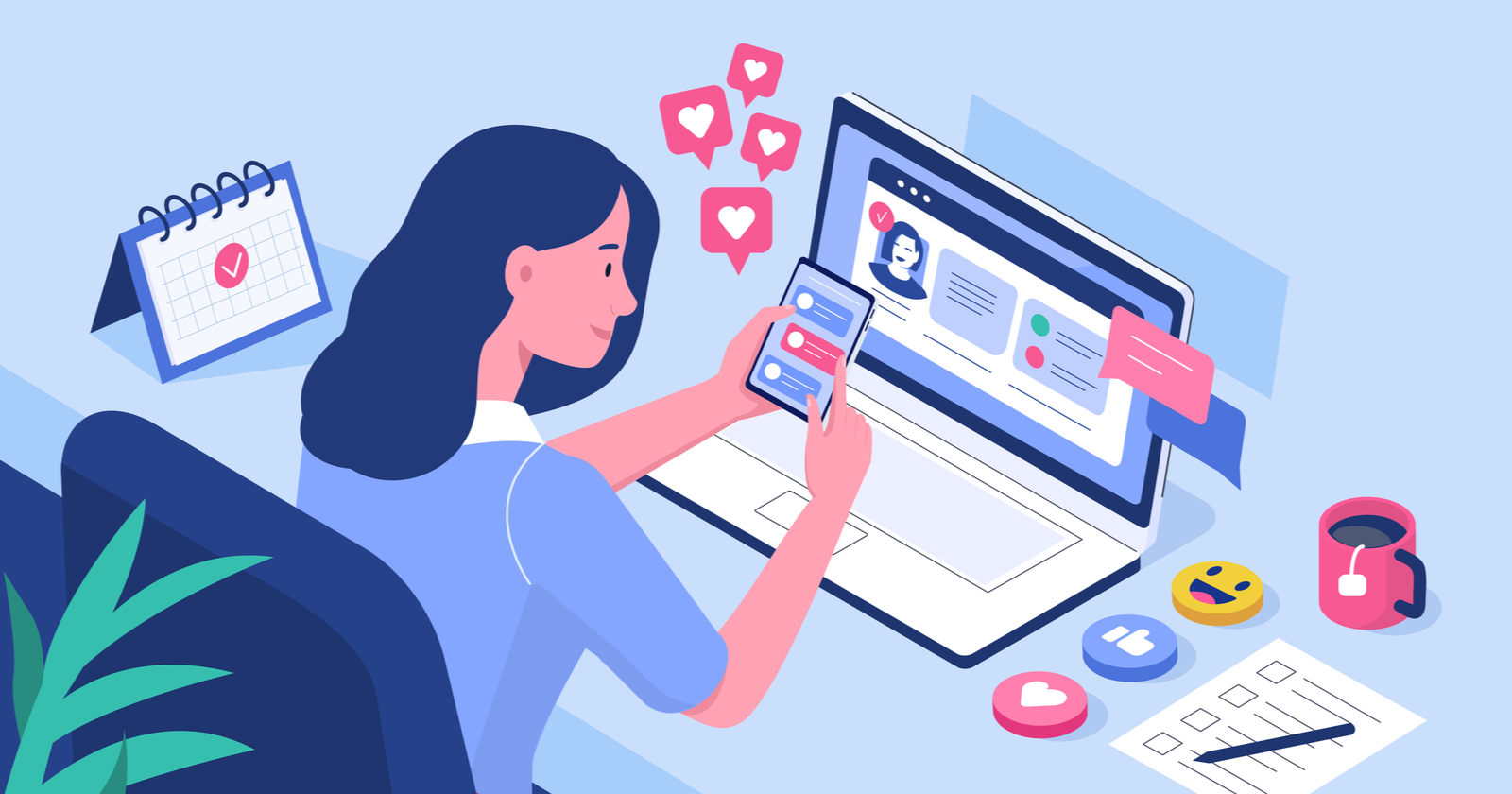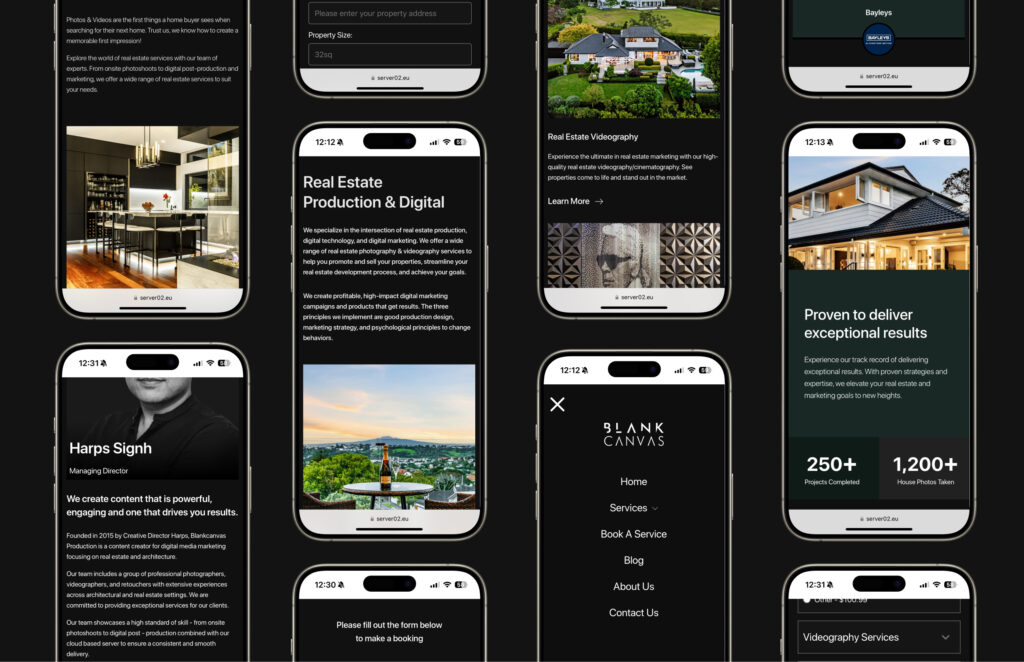How to Optimise Your Website in 2024
Learn how to optimise your website in 2024 with these top strategies. Improve performance, boost user experience, increase search rankings, and drive more conversions. Stay competitive with essential SEO, UX, and speed enhancements for both mobile and desktop.

*We’ve posted a refreshed update of this blog post for 2025! There’s still some goodies in here, but if you want the latest and greatest, check out our new article here.
Website optimisation isn’t just a nice-to-have in 2024 – it’s a game-changer for online success. It improves how your website performs, makes it easier to use, boosts your search engine rankings, and drives more conversions.
Unfortunately you can’t just rely on having a great website design anymore! So, if you have a small business site or a large e-commerce platform, using these strategies is essential. Not only do they give you a top-notch website, they help you stay competitive.
What Is Website Optimisation?
Website optimisation is all about making your site better. It means improving and developing different parts of your website to create a better experience all round! It involves both technical tweaks and content adjustments.
The goal is simple: make your site faster, more accessible, and easier for users and search engines to understand.
Website optimisation includes:
- Technical SEO: Improving the backend structure so search engines can easily crawl and index your site. As it’s in the name, it’s a bit technical. And, depending on your skills, it will probably require the help of a developer so don’t be afraid to get in touch!
- On-Page SEO: Enhancing content, titles, and meta descriptions on individual pages to boost search rankings when users search with specific search terms or keywords.
- User Experience (UX): Ensuring the design is smooth and user-friendly to keep visitors engaged.
- Speed: Making sure pages load quickly so users stay on your site and Google gives you a thumbs up. We do this by optimising images, installing ‘Lazy Loading, upgrading the website hosting, and many more web-wizardry tricks!
By optimising all these elements, you make your website better for search engines! And, you’re creating a better experience for users, which means you’ll increase your website visitors they’re more likely to come back.

Why Is Website Optimisation Important?
Website optimisation isn’t just a one-time thing – it’s essential to keep users happy and growing your business. And no matter where you are in the world, this type of website development matters!
- Higher Search Rankings: Google loves fast, mobile-friendly, and high-quality sites. If you don’t optimise, your website might not even reach the first page of search results. And that means less visibility and fewer visitors.. We obviously don’t want that!
- Improved User Experience: An optimised site is fast, responsive, and easy to navigate. This keeps users happy and encourages them to stick around longer. If you’ve noticed your Bounce Rate is quite high, I’d look into your websites UX to find any problems.
- Conversion rate optimisation: When users find what they need easily and complete actions smoothly, conversions go up. Even a one-second delay in load time can cut conversions by 7%. So, optimisation can directly impact your revenue. Another little tip: Make sure users can navigate around your website to where they need to go in 3 clicks or less!
- Mobile Accessibility: Over 50% of all web traffic comes from mobile devices. So having a mobile-friendly site is a must. Google’s mobile-first indexing also makes it crucial for better rankings. Remember! Don’t forget about desktop users.
Top 10 Website Optimisation Strategies
Implement UI/UX Web Design Practices
What It Is: UI (User Interface) and UX (User Experience) design focus on making your site easy to use and look good! UI handles the look, while UX is about the feel of the website and how users experience different actions or pathways.
Why It’s Important: Good design makes users want to explore more pages but a bad design makes them leave faster. Ever landed on a site that made you think “Uh-Oh, I’ve just given my computer a virus!”? You’re not alone, that’s why having a good design can help by keeping your users engaged longer.
How to Implement It:
- Simplify navigation: Make it easy for users to find what they need. Use clear menu labels and add a search bar. As I said before, make sure your users can get where they need to in 3 clicks or less! Search engines do rank websites based on this.
- Use intuitive layouts: Arrange elements logically to guide users. Think about ‘Standard Website Practices’ and don’t reinvent the wheel as well.
- Highlight CTAs: Make call-to-action buttons clear and easy to find, like “Buy Now” or “Sign Up.”
Expert Tip: Use Hotjar to watch how users interact with your site and spot problem areas, like where they get confused or drop off.
Optimise Content Marketing
What It Is: Content marketing means creating and sharing valuable content that attracts, engages, and converts your audience. This includes blogs, landing pages, videos, and newsletters all from your website!
Why It’s Important: Using quality content on your site’s design not only builds your authority but it also helps your search rankings and user trust.
How to Implement It:
- Create content that answers user questions: Focus on solving problems and providing value.
- Update old content: Keep it fresh with new info, stats, and links.
- Promote your content: Use social media, emails, and SEO to get more eyes on it.
Expert Tip: Create content that your users actually want! Use tools like Google Keyword Planner or Ahrefs to find what your audience is searching for and create content that meets those needs.

Improve On-Page SEO
What It Is: On-page SEO involves optimising individual web pages to rank higher and attract more traffic. It includes keywords, meta tags, alt text, and structured data.
Why It’s Important: It helps search engines understand your content and what it relates to, which leads to better visibility and more clicks.
How to Implement It:
- Use keywords wisely: Run some keyword research and include them in titles, headings, URLs, and throughout the content.
- Write strong meta titles and descriptions: These influence click-through rates from search results.
- Use header tags: Organise content with H1, H2, and H3 tags for easier reading and better rankings.
Expert Tip: Use the Yoast SEO plugin (if on WordPress) to help optimise your pages and make content more readable.
Fix Technical SEO Issues
What It Is: Technical SEO improves your website’s structure, making it easier for search engines to crawl and index. It includes improving site speed, fixing duplicate content, and cleaning up broken links.
Why It’s Important: Technical SEO not only boosts rankings. It also means users have a smooth experience without errors or long load times.
How to Implement It:
- Check Core Web Vitals: Use Google PageSpeed Insights to monitor speed, responsiveness, and visual stability.
- Fix broken links: Regularly check for and remove broken links.
- Use clean URLs: Keep URLs short, descriptive, and consistent.
Pro Tip: Run regular SEO audits using tools like Screaming Frog or Google Search Console to catch and fix issues, even Google Analytics can help with this. We even offer free audits on your websites health and SEO which you can get here!
Speed Up Your Site
What It Is: Speed optimisation improves load times so users don’t have to wait around.
Why It’s Important: Google loves fast sites, and so do users. Slow sites have higher bounce rates, lower engagement, and fewer conversions.
How to Implement It:
- Compress images: Use TinyPNG to reduce image sizes without losing quality.
- Use browser caching: Store parts of your site locally on users’ browsers for faster repeat visits.
- Minify CSS, JavaScript, and HTML: Remove unnecessary code to speed things up.
Pro Tip: Use a CDN (Content Delivery Network) to deliver content faster across different locations.
Aim For Mobile-Friendliness
What It Is: Mobile optimisation ensures your site works well on all devices. This includes responsive design, simplified navigation, and touch-friendly buttons.
Why It’s Important: With over half of web traffic coming from mobile, you need to ensure a good mobile experience. Google’s mobile-first indexing also makes it essential for rankings.
How to Implement It:
- Use a responsive design: Make sure your site adjusts automatically to different screen sizes.
- Simplify menus: Use dropdown or accordion menus for easy navigation.
- Ensure touch-friendly buttons: Make buttons large enough to tap easily.
Expert Tip: Use Google’s Mobile-Friendly Test to check your site and find areas to improve.

Test and Run Experiments Regularly
What It Is: A/B testing starts by creating different versions of a site page which run at the same time. This way you can see clear winners and remove the losers!
Why It’s Important: It gives you insanely good insights so you can understand what users like and improve conversion rates.
How to Implement It:
- Test headlines, images, colours, copywriting, and CTAs: See which combinations drive the most engagement.
- Use tools like Google Optimise: Set up and analyse tests easily.
- Design different layouts: Test different webpage sections in different spots to find clear winners.
Expert Tip: Start with small changes, then test bigger elements to see what impacts performance the most.
Follow Website Accessibility Best Practices
What It Is: Web accessibility ensures your site is usable for everyone, including those with disabilities.
Why It’s Important: It expands your audience and boosts search rankings, as Google rewards accessible sites.
How to Implement It:
- Add alt text to images: Describe images for screen readers. Which also helps with your SEO ranking!
- Include video captions: Making sure all videos are accessible for all users.
- Ensure good colour contrast: Use contrasting colours for better readability.
Expert Tip: Use tools like WAVE to check and fix accessibility issues.
Invest in Link-Building
What It Is: Link-building is about getting other websites to link back to yours, signalling trust and authority.
Why It’s Important: Having high quality backlinks improves your rankings and bring in referral traffic.
How to Implement It:
- Create valuable content: Make content that others want to link to, like guides or infographics.
- Outreach: Reach out and build relationships with industry sites for link opportunities in exchange for content.
Expert Tip: Focus on earning high-quality backlinks from credible sites—they carry more weight than lots of low-quality links.
Use Customer Feedback to Enhance Your Site
What It Is: Customer feedback tells you what users like, don’t like, and want. Sometime’s its hard to hear, but it’s also extremely valuable to your websites performance!
Why It’s Important: Listening to users helps you make smarter decisions that improve user satisfaction and conversions.
How to Implement It:
- Use surveys: Ask for feedback through pop-ups, emails, or forms.
- Monitor reviews: Pay attention to online reviews and fix recurring issues.

Conclusion
Having an optimised website is a continuous process. Start small by improving user experience, boosting SEO, increasing speed, and ensuring accessibility. You’ll begin to attract more traffic, keep users engaged, and drive better conversions in a short amount of time. Keep testing, analysing, and refining your strategies to stay ahead!
And of course, if you need a hand – Reach out to us here!
Frequently Asked Questions
Below are some frequently asked questions relating to this blog post.